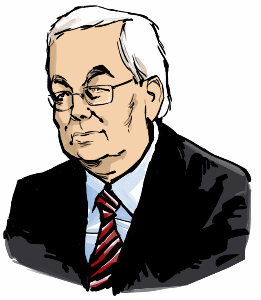© Gunnar Tómasson
7 February 2015.
Some 35 years ago, my late wife and I visited Stratford-upon-Avon.
On entering Holy Trinity Church, a challenge greeted us:
19949 = STAY PASSENGER WHY GOEST THOU BY SO FAST
22679 = READ IF THOU CANST WHOM ENVIOUS DEATH HATH PLAST
24267 = WITH IN THIS MONUMENT SHAKSPEARE: WITH WHOME
20503 = QUICK NATURE DIDE WHOSE NAME DOTH DECK YS TOMBE
20150 = FAR MORE THEN COST: SIEH ALL YT HE HATH WRITT
21760 = LEAVES LIVING ART BUT PAGE TO SERVE HIS WITT
129308
Now, all these years later, I submit a solution to the challenge.
In Cipher Form, the solution “reads” as follows:
38764 + 78372 + 8282 + 3890 = 129308.
In reverse order, the first two cipher components translate into text as follows:
3890 = Christ
8282 = Will Shakespeare¹
The third component is the Cipher Value of Snorri Sturluson‘s introduction in Edda of the Cosmic Creative Power that would later be presented in the Shakespeare Opus as Prince Hamlet²:
11285 = Hvatt kveða hræra Grótta
9506 = hergrimmastan skerja
10802 = út fyrir jarðar skauti
9348 = eylúðrs níu brúðir,
12121 = þær er, lungs, fyrir löngu,
8424 = líðmeldr, skipa hlíðar
10874 = baugskerðir rístr barði
6012 = ból, Amlóða mólu.
78372
The fourth component is the Cipher Value of Snorri‘s introduction in Edda of Brennu-Njáll, or Burnt Niall, the title character of the Saga masterpiece Brennu-Njáls Saga:
11213 = Senn jósum vér, svanni,
9951 = sextán, en brim vexti,
7823 = dreif á hafskips húfa
9777 = húm, í fjórum rúmum.
38764
The archaic language (kennings) used in both verses defies translation into modern Icelandic.
Suffice it to say that these are the only explicit references to the twin actors – Cosmic Creative Power and Archetypal Man-Beast/Man – of ancient creation myth to be found in Snorri Sturluson’s Edda.
¹ Will Shakespeare is listed as an actor in two plays by Ben Jonson.
² The Once And Future King
(Giorgio de Santillana)
This is meant to be only an essay. It is a first reconnaissance of a realm well-nigh unexplored and uncharted. From whichever way one enters it, one is caught in the same bewildering circular complexity, as in a labyrinth, for it has no deductive order in the abstract sense, but instead resembles an organism tightly closed in itself, or even better, a monumental „Art of the Fugue.“
The figure of Hamlet as a favorable starting point came by chance. Many other avenues offered themselves, rich in strange symbols and beckoning with great images, but the choice went to Hamlet because he led the mind on a truly inductive quest through a familiar landscape – and one which has the merit of its literary setting. Here is a character deeply present to our awareness, in whom ambiguities and uncertainties, tormented self-questioning and dispassionate insight give a presentiment of the modern mind. His personal drama was that he had to be a hero, but still try to avoid the role Destiny assigned him. His lucid intellect remained above the conflict of motives – in other words, his was and is a truly contemporary consciousness. And yet this character whom the poet made one of us, the first unhappy intellectual, concealed a past as a legendary being, his features predetermined, preshaped by long-standing myth. There was a numinous aura around him, and many clues led up to him. But it was a surprise to find behind the mask an ancient and all-embracing cosmic power – the original master of the dreamed-of first age of the world.
Yet in all his guises he remained strangely himself. The original Amlóði, as his name was in Icelandic legend, shows the same characteristics of melancholy and high intellect. He, too, is a son dedicated to avenge his father, a speaker of cryptic but inescapable truths, an elusive carrier of Fate who must yield once his mission is accomplished and sink once more into concealment in the depths of time to which he belongs: Lord of the Golden Age, the Once and Future King.
This essay will follow the figure farther and farther afield, from the Northland to Rome, from there to Finland, Iran, and India; he will appear again unmistakably in Polynesian legend. Many other Dominions and Powers will materialize to frame him within the proper order.
Amlóði was identified, in the crude and vivid imagery of the Norse, by the ownership of a fabled mill which, in his own time, ground out peace and plenty. Later, in decaying times, it ground out salt; and now finally, having landed at the bottom of the sea, it is grinding rock and sand, creating a vast whirlpool, the Maelstrom (i.e. the grinding stream, from the [Icelandic] verb mala, „to grind“), which is supposed to be a way to the land of the dead. This imagery stands, as the evidence develops, for an astronomical process, the secular shifting of the sun through the signs of the zodiac which determines world-ages, each numbering thousands of years. Each age brings a World Era, a Twilight of the Gods. Great structures collapse; pillars topple which supported the great fabric; floods and cataclysms herald the shaping of a new world. (Hamlet’s Mill – An Essay on Myth and the Frame of Time, 1969; Second Paperback Edition, David R. Godine, Publisher, Boston, 1983, pp. 1-2.)
***
A calculator for converting letters to cipher values is on the Internet at:
http://www.light-of-truth.com/ciphersaga.htm

 Gunnar Tómasson
Gunnar Tómasson